The natural beauty of Orkney’s landscape boasts a rich variety of scenery.
Between the rugged cliffs at Yesnaby in the west and the sandy beaches of Deerness in the east, lie rolling green hills and wild heather moors.
The Orkney Mainland is just 25 miles across but you will find plenty of places to explore.
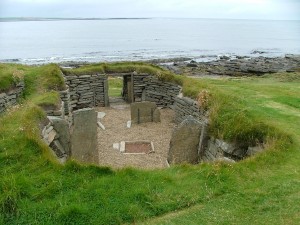 Orkney’s history goes back many thousands of years, yet evidence still remains of the people that lived and worked here.
Orkney’s history goes back many thousands of years, yet evidence still remains of the people that lived and worked here.
Starting with the Knap o’Howar on the island of Papa Westray, which is the oldest standing building in Northern Europe, dating back to approx 3600BC.
The most visited historical site in Orkney is the Neolithic village at Skara Brae, regarded by many as one of the most remarkable sites in Europe.
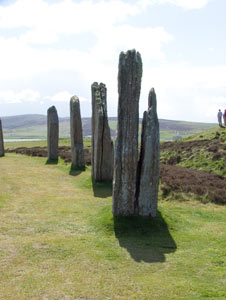 This site, along with the Ring of Brodgar, the Standing Stones of Stenness, the Barnhouse Stones, the Watchstone and the chambered tomb of Maeshowe, forms the UNESCO World Heritage site named The Heart of Neolithic Orkney.
This site, along with the Ring of Brodgar, the Standing Stones of Stenness, the Barnhouse Stones, the Watchstone and the chambered tomb of Maeshowe, forms the UNESCO World Heritage site named The Heart of Neolithic Orkney.
Excavations still continue at another Neolithic complex at the Ness of Brodgar and twice daily tours of the excavation are available weekdays during the summer.
The remains of Iron Age brochs can be seen at the Broch o’ Gurness, Minehowe and Midhowe Broch.
At the Brough o’ Birsay, a tidal island off the northwest corner of the Orkney mainland, contains the remains of Pictish and Norse age buildings.
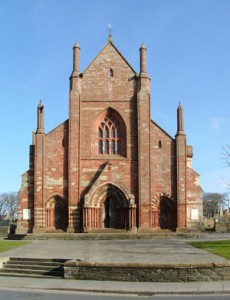 Orkney’s capital, Kirkwall, is dominated by St Magnus Cathedral, Britain’s most northerly cathedral. It was founded in 1137 by Viking Earl Rognvald in honour of his uncle St Magnus and has been described as ‘one of the finest and best preserved medieval cathedral in the world’. Not just a monument, but a place of worship, with services taking place every Sunday.
Orkney’s capital, Kirkwall, is dominated by St Magnus Cathedral, Britain’s most northerly cathedral. It was founded in 1137 by Viking Earl Rognvald in honour of his uncle St Magnus and has been described as ‘one of the finest and best preserved medieval cathedral in the world’. Not just a monument, but a place of worship, with services taking place every Sunday.
Two ruined palaces can be found near the Cathedral.
Bishop’s Palace, the older of the two, was built in the mid 12th Century but all that remains today is the shell of one building and the Moosie Toor.
Directly opposite stands the Earl’s Palace, hailed as ‘the finest example of French Renaissance architecture in Scotland’.
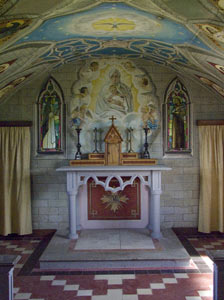 More recent history is also on display at the Churchill Barriers.
More recent history is also on display at the Churchill Barriers.
These were ordered to be built by Churchill in 1940 after the sinking of HMS Royal Oak in 1939 by the German U boat in order to seal off the eastern approaches to Scapa Flow.
Italian Prisoners of War were drafted in early 1942 to assist in this work.
A unique memorial to these Prisoners of War is the Italian Chapel, expertly converted from 2 Nissan Huts and second hand materials.
These are the highlights of the many historical sites in Orkney but there are many others – according to statisticians, Orkney boasts 3 historical monuments per square mile!
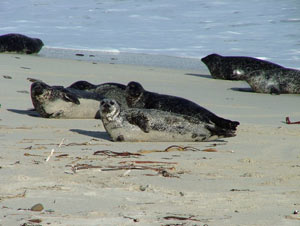 Orkney’s natural environment is peaceful yet there is an abundance of wildlife to be seen.
Orkney’s natural environment is peaceful yet there is an abundance of wildlife to be seen.
Grey and common seals are present in great numbers and can be seen around the coastline all year round. Dolphins, whales and even basking sharks have even been spotted occasionally.
The variety of habitat makes Orkney one of the premier all-season birdwatching destinations, with 21 breeding species of sea birds present here, including puffins. The RSPB manages over 8,000 hectares of land here and with the wide variety of birds, any time of year is rewarding for the birdwatcher.
Orkney’s diverse range of habitat allows a variety of wild flowers to bloom.
If you look hard, the rare primula scotia (the Scottish primrose) can be found at several sites during the two flowering periods.
There are also plenty of activities to enjoy in Orkney.
Fishing in the well-stocked lochs, surfing, cycling, golf and walking are all available here or perhaps you fancy diving in the world-famous Scapa Flow, home to the German High Seas Fleet that were scuttled here in 1919.
If you follow the Orkney Craft Trail, you will discover silversmiths, jewellery manufacturers, tapestry weavers, print makers, glass makers, knitwear and textile designers, modern and traditional furniture makers and potters and many have small studios, workshops and galleries to visit.
Orkney is world famous for the quality of its beef, lamb and fish and all can be found on the menus at local restaurants. You will also find Highland Park whisky (the distillery is in Kirkwall and tours are available), ales from the Orkney Brewery and wine from the Orkney Wine Company.
There are many events and festivals going on in Orkney throughout the year.
Details of all of them can be found at www.visitorkney.com/events
From The Ba’, a game of traditional street rugby, played on the streets of Kirkwall on Christmas Day and New Years Day, agricultural shows, music festivals including the Orkney Folk Festival and the prestigious St Magnus Festival to Stromness Shopping Week, a summer community Gala event, there really is something for everyone.
